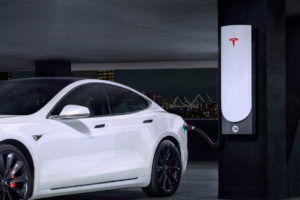“Let all the children use it, let all the children lose it, let all the children boogie.”
Love it or hate it, Elon Musk knows how to put on a show.
The Falcon Heavy test flight launched on February 6th 2018. The launch was conducted by Space X, the privately owned space exploration company run by Tesla’s Elon Musk. Musk is one of the hottest names in the technology and business worlds – a billionaire innovator whose companies are making dramatic strides in sustainable energy and motoring, and expanding the private sector’s access to space-based progress.
The flight aimed to determine whether the Faclon Heavy, Space X’s latest and greatest rocket, could successfully take a payload of its intended volume beyond the Earth’s orbit. As you may well have heard, launch was an incredible success. However, NASA and Space X are both making strides with every launch they undertake, so why has this one grabbed the public’s attention? Partly, because it introduced the Falcon Heavy as the most powerful rocket in operation, producing five million pounds-force (22 MN) of thrust and having more than twice the lift capacity of the NASA Space Shuttle launch system. Another part of the reason, though, might have something to do with the fact that this powerful rocket demonstrated its strength by launching a sportscar into space. Not just any sportscar – a rather fetching, cherry-red Tesla Roadster.
This dummy payload was supposedly Musk’s own car, chosen in order to create the type of weight and mass that the Falcon Heavy should eventually deliver to space stations and other space missions. It was launched with enough velocity to escape the Earth’s pull and enter an elliptic orbit around the Sun, crossing the orbit of Mars and reaching a maximum distance from the Sun of 1.67 AU.
Officially the first commercial car to be launched into space, the Roadster’s voyage had people tuning in. A spacesuit-wearing dummy, lovingly named Starman, sits casually in the driver’s seat, resting his left elbow out of the open window as he cruises through the void. During the early hours of his journey, the Roadster streamed video footage back to Earth, creating some truly surreal and memorable images.
It’s clear that the team put love into this launch: as well as this relaxed ‘driver’ fulfilling David Bowie’s promise that there’s a Starman waiting in the sky, the car’s sound system was put to good use, looping the artist’s iconic songs Space Oddity and Life on Mars? (though oddly, not Starman itself!) Bowie, who passed away in 2016, is often linked with ideas of space thanks to his alien alter-ego Ziggy Stardust, his role in The Man Who Fell To Earth (1976), and his interest in space, technology and science shown through his songs and interviews. A constellation of stars were even named after the singer as a special honour after his death.
However, the Tesla Roadster’s references didn’t stop with Bowie. Reluctant to pass up the opportunity of a few nods, the Space X team also placed the words “Don’t Panic!” over the vehicle’s dashboard screen, an apt shout-out to Douglas Adams’ popular The Hitchhiker’s Guides to the Galaxy, and the car also contains a crystal disk of Isaac Asimov’s Foundation book series, compiled by Arch Mission Foundation - a non-profit organization who aim to spread redundant repositories of human knowledge around the Solar System. Lastly, hidden away and engraved on a circuit board reads the message “Made on Earth by humans” – just in case anyone out there needs to know!
So what’s so great about this Falcon Heavy rocket? Space X describe it as: “the most powerful operational rocket in the world by a factor of two. With the ability to lift into orbit nearly 64 metric tons (141,000 lb) – a mass greater than a 737 jetliner loaded with passengers, crew, luggage and fuel – Falcon Heavy can lift more than twice the payload of the next closest operational vehicle, the Delta IV Heavy, at one-third the cost.” These sorts of achievements could mean big change for space-based industry; with many start-ups looking into space-tech and the possibilities waiting for us beyond the atmosphere, such as mining resources, tourism and, of course, improved research, increasing the payload size that is possible per launch greatly reduces issues such as cost and pollution. Space X’s dreams are even greater: ““Falcon Heavy was designed from the outset to carry humans into space and restores the possibility of flying missions with crew to the Moon or Mars.”
The Falcon Heavy’s first stage is composed of three Falcon 9 nine-engine cores, whose 27 Merlin engines combine to generate more than 5 million pounds of thrust at lift off, equal to approximately eighteen 747 aircraft. According to Space X, only the Saturn V moon rocket, last flown in 1973, delivered more payload to orbit.
As well as delivering large payloads, it can also carry Space X’s Dragon spacecraft – a free-flying spacecraft designed to deliver both cargo and people to orbiting destinations. It is the only spacecraft currently flying that is capable of returning significant amounts of cargo to Earth, and its first manned test flight is expected to take place later this year.
Whilst images of a red sportscar cruising past the Earth have had people excited, Musk and his companies have received some criticism and backlash for the launch, with opinion columnists in papers and news sites such as the UK’s Guardian suggesting that it was the work of a “wasteful billionaire playboy” who should be spending his money on crises such as Syria, instead of indulging in sending his car to space “for the fun of it”. Any stunt that attracts media attention is bound to provoke some outrage, and for the most part, it seemed that critics has either missed the point of the launch (that it was testing innovative tech, rather than having fun for fun’s sake), or purposefully didn’t look into the story before writing about it. However, any press is good press, and this backlash showed something crucial: Musk has found a way to excite people. Rocket launches, whilst technically a dramatic event, have lost their tarnish somewhat since the days of the space race – only the truly space-obsessed are still deriving that same thrill from the broadcasts, despite the levels of expense, risk, scientific expertise and the crowd-pleasing explosions involved. We know what to expect, and keeping the general public interesting in space can be surprisingly challenging. Whether you like it or not, Musk’s Roadster has definitely made a space launch sexy and relevant again!
The launch-bashing bandwagon has largely calmed down by now, as writers looking to make a quick buck by stirring controversy have mostly been replaced by writers going “Actually…perhaps this was useful?”. At Endeavour, we’re saying “Well, duh.” To critics asking why Musk isn’t investing in crises, we find ourselves turning out attention back to September and October last year, when hurricane-devastated Puerto Rico received aid from Tesla in the form of emergency power and wifi connection, aiding facilities including a children’s hospital. To look a little deeper, we could talk about the great advantages for the planet being developed in terms of sustainable energy and efficient battery storage for said energy, which will benefit developing countries and Earth’s environment alike.
However, there are some scientific concerns emerging that hold more weight: Researchers at Purdue University are joining others voicing worries that it is possible that the Tesla Roadster could eventually impact Mars, and thus expose Mars to a host of Earth’s bacteria. It is unclear where the car will end up, with theories including a collision with Earth, Mars or the Sun itself. Wherever it goes, this won’t happen for millions of years, but the interfering and contaminating effect this could have on any developing life on another planet could be dramatic.
NASA have also voiced concerns, suggesting that the launch demonstrates the risks created from private companies operating outside of the stringent red tape that the agency is subject to. They are using the launch as a focal point for demanding tighter legislation.
However, whatever your opinion, the Falcon Heavy test launch was undertaken in the spirit of science, industrial advancement and honest good fun. The technology it has tested and the results that its voyage will gather have exciting implications for the future of science and business, and it has people talking about space. At the end of the day, we think it’s an impressive feat, a memorable bullet point in history, and the playfulness has to make you smile! Elon Musk is still one of the Good Guys of progress in our book, and we can’t wait to see what he does next.







